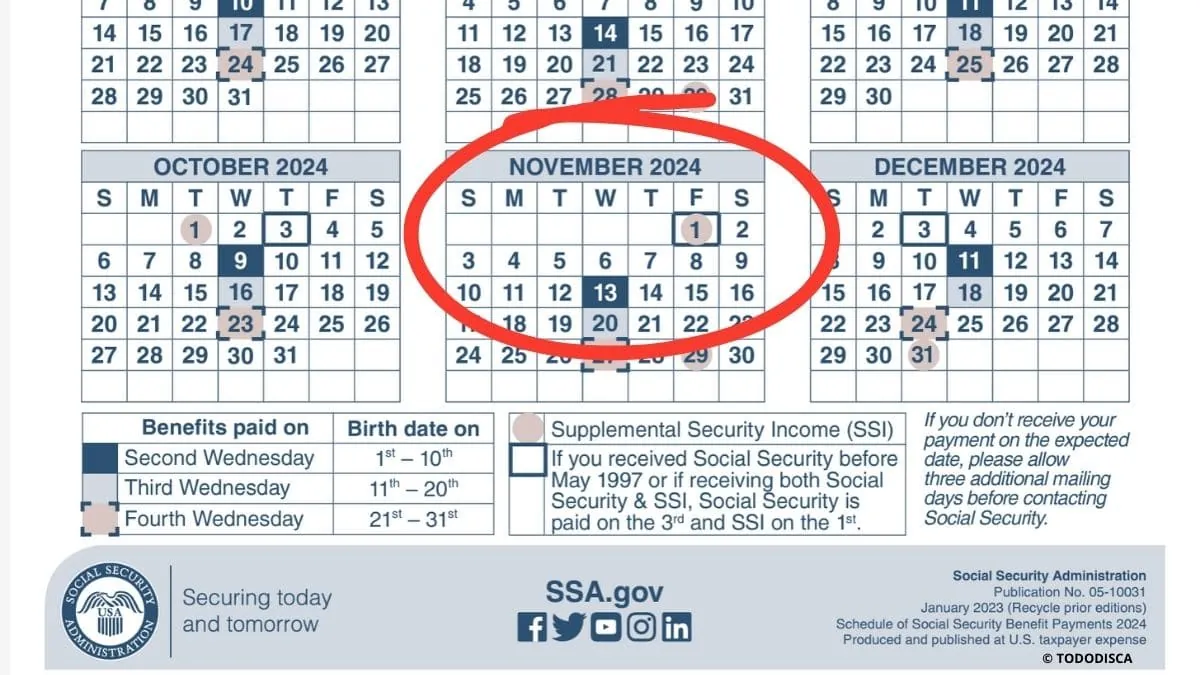Millions of retirees are eagerly awaiting a crucial Social Security payment set for November 13, 2024, which promises significant benefits for those who meet specific eligibility criteria. For retirees who have maximized their Social Security payments, the payout could reach up to $4,873. However, not all retirees will receive this amount, and understanding how to qualify for the maximum benefit is essential.
Who Will Receive the November 13 Payment?
This Article Includes
Social Security payments are distributed monthly based on the date beneficiaries began receiving their benefits and their birthdate. The November 13 payment specifically applies to retirees in Group 2, which includes those who:
- Began receiving Social Security benefits after May 1997
- Have a birthday between the 1st and 10th of any given month
This payment date is distinct and does not apply to Group 1 retirees, those who began receiving benefits before May 1997. Group 1 retirees received their payments earlier, on November 1, and will not receive another payment in November.
For those in Group 2, the payment will be reflected directly in their bank accounts on November 13. For some, this deposit will be considerably higher than usual, with the potential to reach the maximum monthly amount of $4,873.
How to Maximize Your Social Security Payment
The maximum monthly Social Security payment of $4,873 is not available to all retirees. However, it is achievable for those who have taken certain steps throughout their working lives. When a retiree starts claiming benefits, how long they have worked, and their income during those years are some of the factors that affect how much they receive.
1. Delay Claiming Benefits Until Age 70
One of the most effective ways to maximize Social Security benefits is by delaying retirement. While beneficiaries can begin claiming Social Security at age 62, doing so results in a reduced monthly payment. However, if a retiree waits until age 70, their monthly benefit increases significantly, with a higher percentage added each year they wait.
2. Work for 35 Years
Social Security calculates benefits based on the highest 35 years of earnings. Therefore, retirees who have worked for a full 35 years, as opposed to fewer years, and have earned higher wages during this period will be eligible for a higher monthly benefit. The more years worked with substantial earnings, the greater the potential Social Security payment.
3. Earn a High Salary
The Social Security Administration determines benefits using the average earnings over the highest 35 years of a person’s career. Retirees who earned more during these key years are likely to receive a higher payment upon retirement. Higher salaries, especially in the latter stages of a career, can dramatically impact the final benefit amount.
Why Not All Retirees Will Receive $4,873
While the maximum possible benefit for 2024 is $4,873, it is important to note that not all retirees will reach this amount. The exact payout depends on the combination of the factors mentioned above—delayed retirement, length of employment, and high earnings. For most retirees, the monthly payment will be lower, but those who have maximized their Social Security benefits will receive the highest possible amount.
Conclusion
The November 13 payment marks a key date for Group 2 retirees, particularly those who have optimized their Social Security benefits. By waiting until age 70 to claim, working for 35 years, and ensuring high earnings during their career, retirees can maximize their monthly payments. While not everyone will receive the maximum $4,873, understanding how to qualify for a higher benefit can significantly impact a retiree’s financial well-being in their later years.

